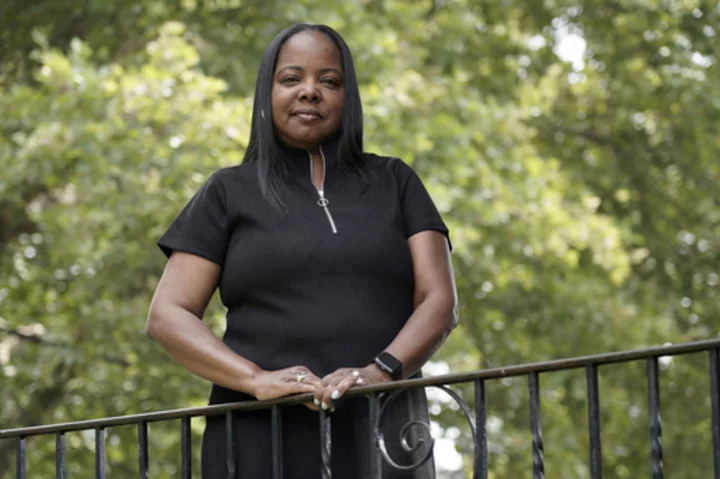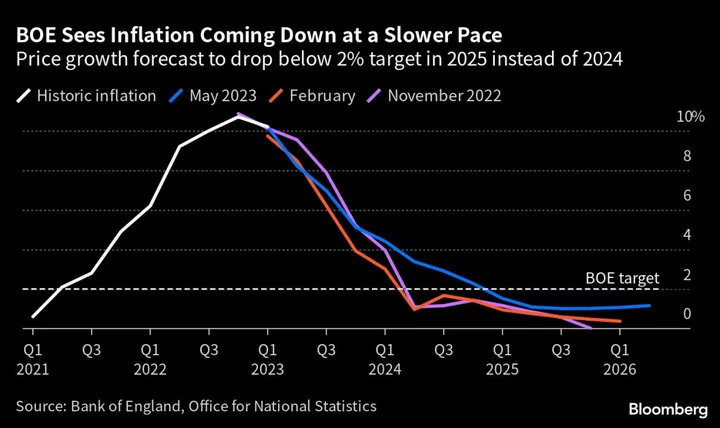HARRISBURG, Pa. (AP) — Rhonda Hicks could have kept working into her 60s. She loved teaching and loved her students in Philadelphia’s public schools. As a Black woman, she took pride in being a role model for many children of color.
But other aspects of the job deteriorated, such as growing demands from administrators over what and how to teach. And when she retires in a few weeks, she will join a disproportionately high number of Black and Hispanic teachers in her state who are leaving the profession.
“I enjoy actually teaching, that part I’ve always enjoyed,” said Hicks, 59. “Sometimes it’s a little stressful. Sometimes the kids can be difficult. But it’s the higher-ups: ‘Do it this way or don’t do it at all.’”
Teachers are leaving jobs in growing numbers, state reports show. The turnover in some cases is highest among teachers of color. A major culprit: stress — from pandemic-era burnout, low pay and the intrusion of politics into classrooms. But the burdens can be heavier in schools serving high-poverty communities that also have higher numbers of teachers of color.
In Philadelphia, a city with one of the highest concentrations of Black residents in the U.S., the proportion of Black teachers has been sliding. Two decades ago, it was about one-third. Last fall, it fell to below 23%, according to district figures.
In the school buildings where Hicks taught, most teachers were white. She said she and other teachers of color were expected to give more of themselves in a district where half the students are Black.
“A lot of times when you see teachers that are saving Black and brown kids on TV, it’s always the white ones,” Hicks said. “There are Black teachers and Hispanic teachers out there that do the same thing in real life, all the time.”
Nationally, about 80% of American public school teachers are white, even though white students no longer represent a majority in public schools. Having teachers who reflect the race of their students is important, researchers say, to provide students with role models who have insight into their culture and life experience.
The departures are undoing some recent success that schools have had in bringing on more Black and Hispanic teachers. Turnover is higher among newer teachers. And researchers have found that teachers of color, who tend to have less seniority, often are affected disproportionately by layoffs.
In Pennsylvania, Black teachers were more than twice as likely to leave the profession as white teachers after the 2021-22 school year, according to a data analysis by Ed Fuller, an education professor at Penn State. Hispanic and multiracial teachers had a similar ratio, of around twice as likely.
Black and Hispanic teachers are more likely to be uncertified or teaching in an underfunded district, all of which is associated with someone leaving the profession at a higher rate, Fuller said.
“They’re in more precarious teaching positions, meaning you’re in a position with less resources and worse working conditions, so you’re more likely to quit no matter who you are,” Fuller said.
Sharif El-Mekki, a former Philadelphia teacher who leads the Center for Black Educator Development, said schools around the country come to him seeking help in recruiting teachers of color. But they don't have plans to retain them, such as providing opportunities to help shape policies and curricula.
To address the problem, schools can start by ensuring students of color have better experiences in school themselves and offering them opportunities to consider teaching, El-Mekki said. Black teachers also are more likely stay on in school systems that have Black leaders, he said, as well as a culture and approaches to teaching that are anti-racist.
“We need to think about, ‘How are they experiencing my school?'” he said. “If they are having a better experience with us, they are more likely to stay.”
Attrition by teachers of color can vary greatly by state or region. Overall, it has been higher compared with white teachers for two decades, since around the time federal policies began encouraging the closure of schools with low test scores, said Travis Bristol, a professor of teacher education and education policy at the University of California-Berkeley.
In underfunded schools with large populations of Black and Hispanic children, teachers say they can expect more responsibilities, fewer resources and more children troubled by poverty and violence.
“I’m still in the classroom because this is my version of resistance and pushing back on a system that was not designed for folks that look like me and kids that look like me,” said Sofia Gonzalez, a 14-year teacher of Puerto Rican heritage in Chicago-area public schools. “We as teachers of color have to find so much inner strength inside of us to sustain our careers in education.”
The last few years have been a trying stretch for teachers everywhere. They've had to navigate COVID-19, a pivot to distance learning and the struggles with misbehavior and mental health that accompanied students' return to classrooms.
Then there’s the pay: Educators’ salaries have been falling behind their college-educated peers in other professions.
Teachers unions have warned of flagging morale, and there are signs lately that more educators are heading for the exits. Data from at least a handful of states — including Pennsylvania, North Carolina, Texas and Washington — is showing an increase in teacher attrition.
Black teachers reported significantly higher rates of burnout and being significantly more likely to leave their job than white teachers, according to research sponsored by two national teachers unions and published in June by the Rand Corp. think tank.
Chantle Simpson, 36, taught her last day of school this spring in Frisco, Texas, ending her 11-year career as a teacher.
She described an exodus of her fellow teachers of color from the profession amid growing expectations from administrators, who put more work on teachers by repeatedly appeasing demands from parents.
Administrators — including those who are Black or Hispanic — put more pressure on Black and Hispanic teachers, she said.
“They believe we can handle more,” Simpson said. “Because we develop relationships better, the kids understand us more, so they’re more likely to behave for us or do what we ask them to. So we get fitted with the children who are more challenging or have more requirements. It’s crazy.”
That leaves those teachers with less time for the rest of their better-behaved students, Simpson said.
“I always was conflicted by it,” Simpson said. “It’s mixed with praise, but it’s a punishment. ‘Oh, you’re so great at building relationships, the kids really appreciate being with you, they respond to you.’ But at the same time, you’re increasing my workload, you’re increasing the amount of attention I have to give to one child versus my whole class.”
___
Follow Marc Levy on Twitter: http://twitter.com/timelywriter
___
The Associated Press education team receives support from the Carnegie Corporation of New York. The AP is solely responsible for all content.









